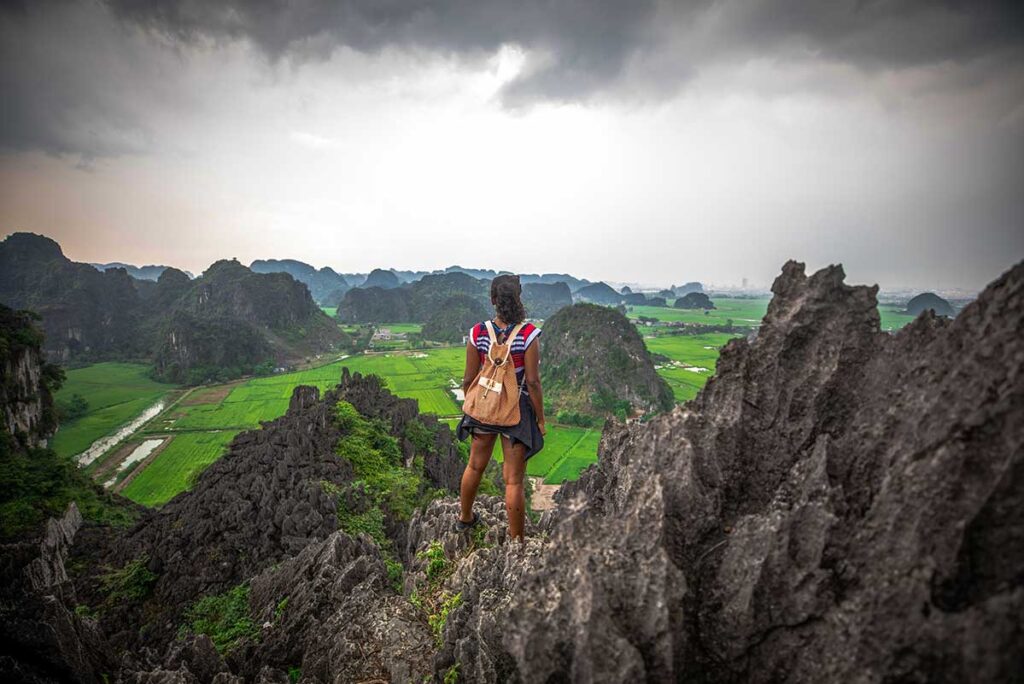What is Vung Ro Bay?
Location & Scenery

Vung Ro Bay sits in southern Phu Yen, tucked just below Ca Pass on the coastal road QL29. It’s a naturally sheltered harbor, edged by the peak of Nui Da Bia, the headland of Mui Dien, and the small islet of Hon Nua at its mouth. From the roadside viewpoints, you see calm emerald water dotted with wooden boats and floating fish farms, all set against steep green hills. There are patches of coral under the surface, though they are recovering rather than pristine, so this isn’t a top snorkeling spot.
History of the bay
During the Vietnam War, Vung Ro Bay played a key role in the “Maritime Ho Chi Minh Trail.” This was the secret supply route used by the so-called “ships without numbers,” which carried weapons from the north to support the southern resistance. In 1965, one of these ships was discovered, leading to airstrikes and skirmishes that effectively ended the seaborne route. Today you can see a modest memorial and small exhibition known as the Tau Khong So site, which marks the event.
Local fishing life today
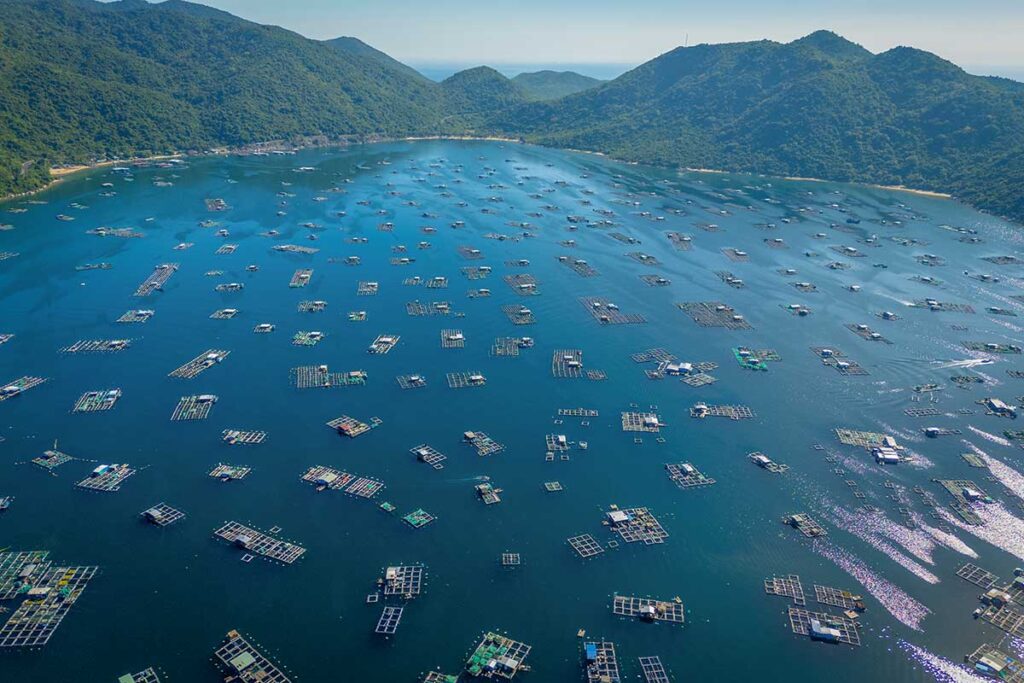
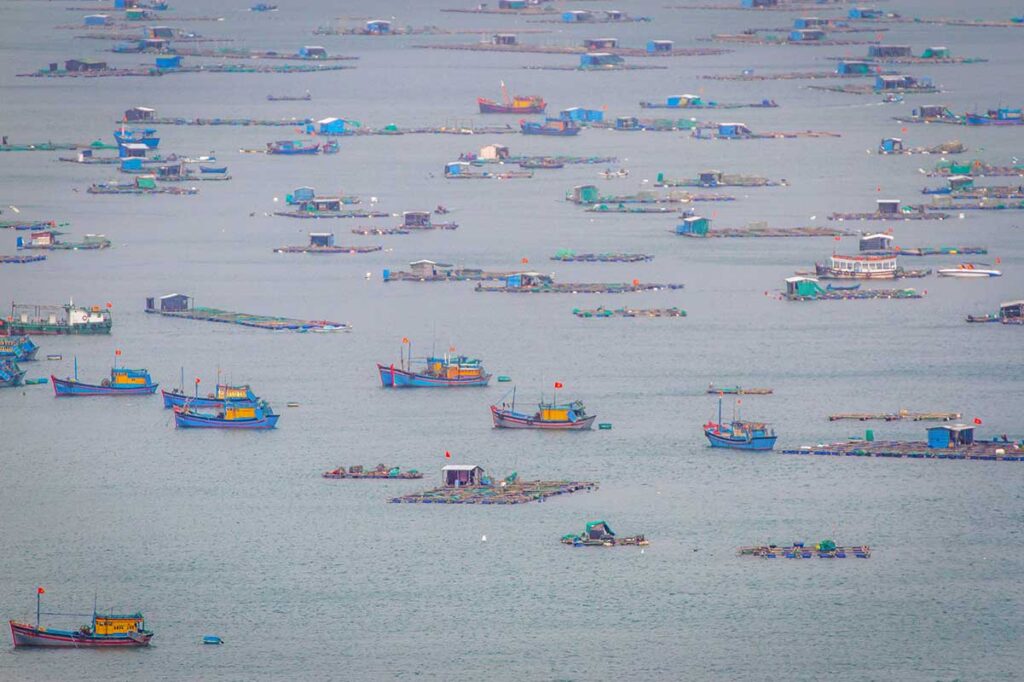
These days the bay is better known for its aquaculture. Lobster and cobia are farmed on floating rafts, which dominate much of the water. The industry has created pollution challenges from plastic and feed waste, but there are ongoing efforts to clean up the area and protect the ecosystem.
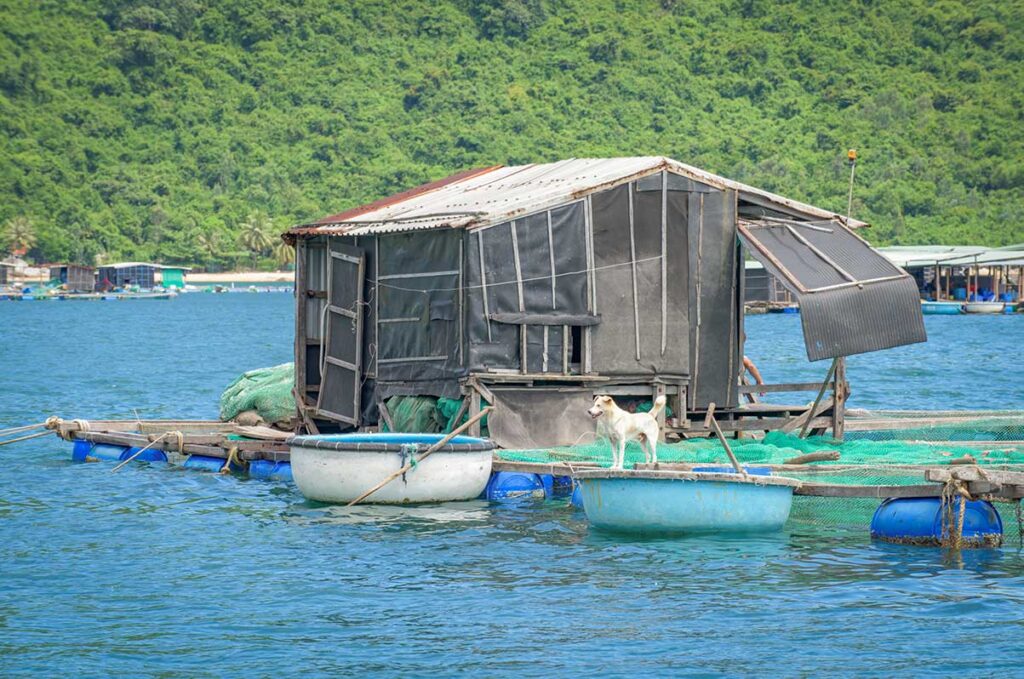

For visitors, the most visible part of this economy is the floating seafood restaurants, where you’re ferried out to pontoons and pick live seafood for lunch. Beyond that, Vung Ro Bay remains very much a working fishing bay rather than a tourist development.
Highlights of visiting Vung Ro Bay
Vung Ro Bay is best seen as a scenic stop rather than a fully developed destination. The drive along the coastal road and the views over the bay are the real highlights, with just a handful of experiences once you arrive. You can stop for photos, eat at a floating restaurant, or take a look at the small war memorial, but the facilities are simple and the activities limited. It works best when combined with nearby spots like Bai Mon Beach and Mui Dien Lighthouse.
1. Scenic drive over Ca Pass
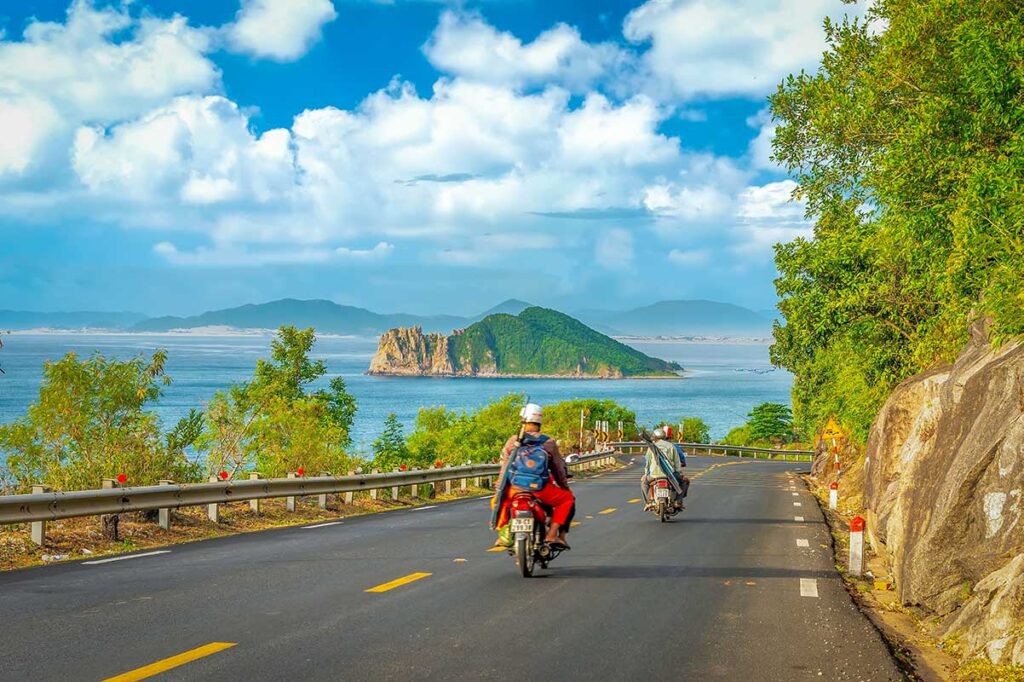
Reaching Vung Ro Bay is part of the appeal. The coastal road QL29 winds over Ca Pass, offering sweeping views of the mountains on one side and the turquoise sea on the other. You’ll pass forested slopes, rocky headlands, and occasional viewpoints where you can stop for photos.
2. Views of the bay & Floating farms

From the roadside or shoreline, the bay stretches out calm and turquoise, scattered with floating rafts, fishing boats, and simple houses built on pontoons. It’s a working landscape rather than a postcard beach, but the contrast of emerald water and rugged mountains makes for great photography and gives you a glimpse of everyday fishing life.
3. Floating seafood restaurants
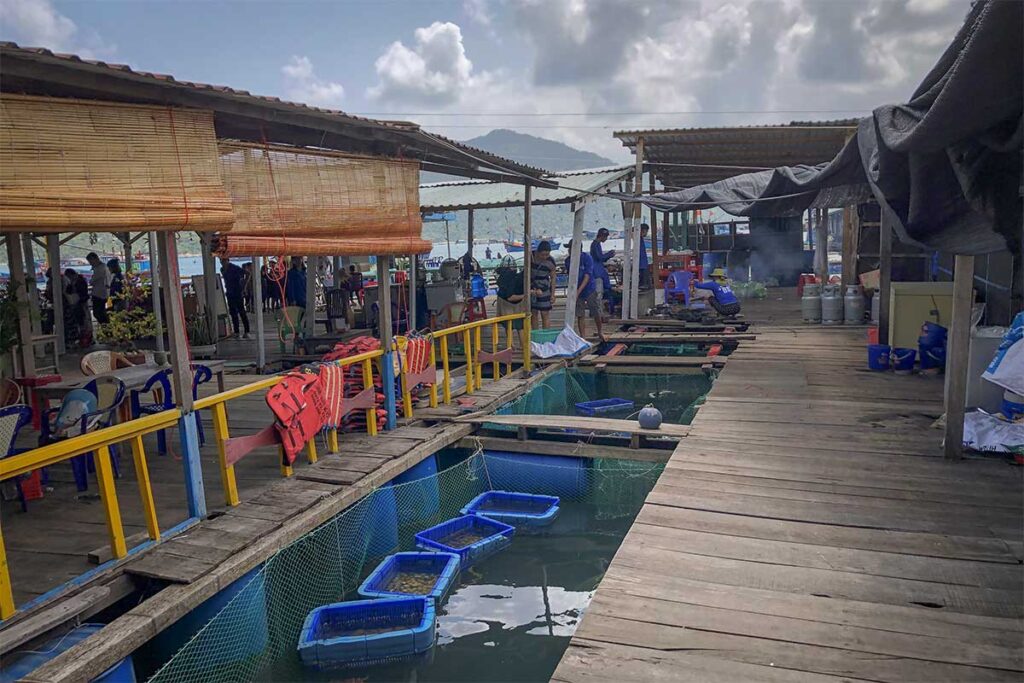
One of the main draws for domestic visitors is dining at a floating seafood restaurant. You take a short boat ride out to the pontoon, choose live seafood such as lobster or fish, and have it cooked on the spot. For international visitors, it can be a fun local experience, though facilities are very basic, English is limited, and it’s best to confirm prices before you order.
4. Vung Ro War Memorial (Tau Khong So)
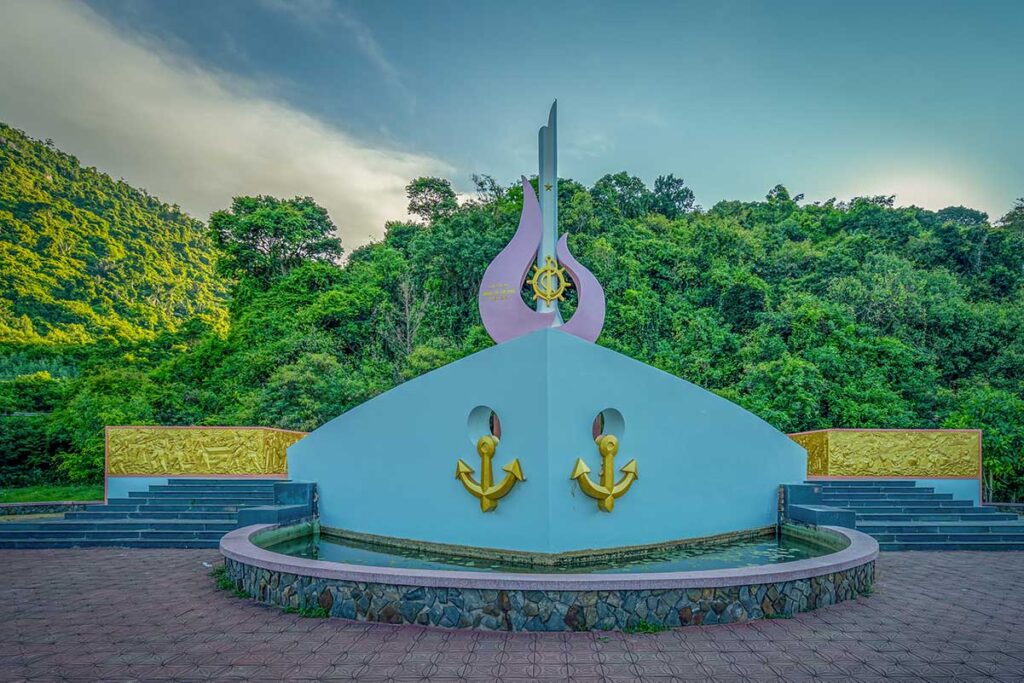
On the edge of the bay stands a memorial shaped like the bow of a ship, with two anchors at its base. A small exhibition explains the story of the “ships without numbers,” which supplied the south during the Vietnam War. It’s an important cultural site for Vietnamese, while foreign visitors may find it modest but worth a quick look if you’re interested in history.
5. Water activities
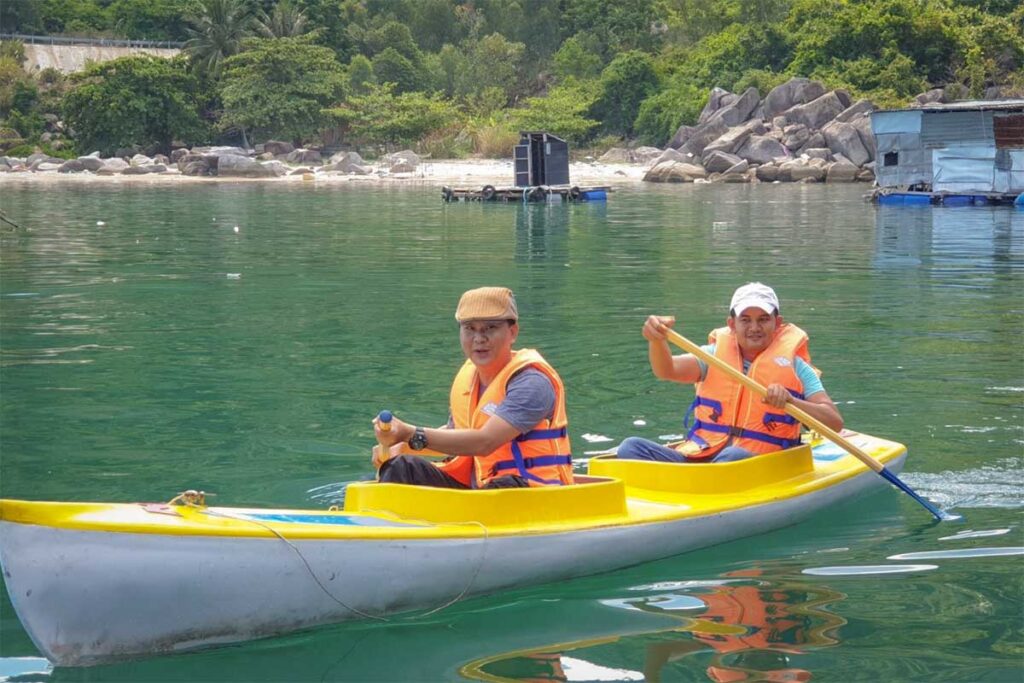
Some floating restaurants offer kayaks, banana boats, or short fishing trips. Snorkeling is possible in parts of the bay, though water clarity and coral quality are hit and miss. These activities are more geared toward domestic visitors, so don’t expect organized tours or international-level equipment.
6. Nearby attractions to combine
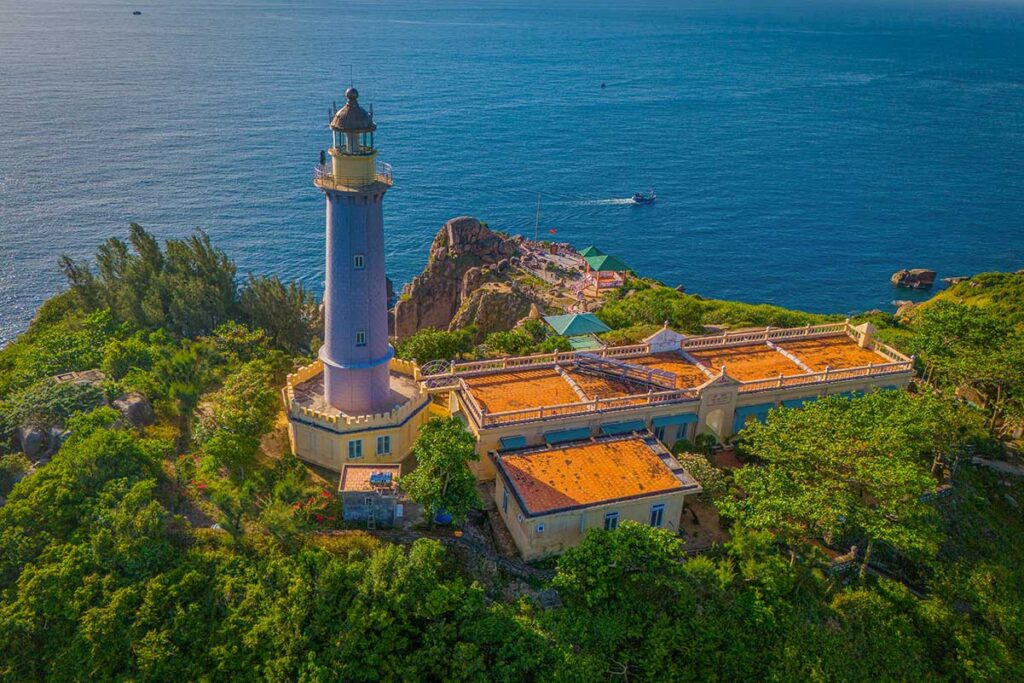
- Bai Mon Beach & Mui Dien Lighthouse: A golden-sand beach tucked between cliffs, with a colonial-era lighthouse above it. You can climb to the top of the lighthouse or walk out to the windy Mui Dien cape. Entrance is about 30,000 VND. Swimming is possible, though currents can be strong.
- Nui Da Bia (Stele Mountain): A hiking trail leads up to the rocky summit overlooking Vung Ro Bay and the coast.
- Hon Nua Islet: A striking rocky islet that sits at the mouth of the bay. It’s mostly a landmark to photograph from the shore unless you arrange a boat to visit.
Location & Getting there
Where is Vung Ro Bay?
Vung Ro Bay is in Dong Hoa district, about 35–40 kilometers south of Tuy Hoa, the provincial capital of Phu Yen. Tuy Hoa itself is easy to reach by train on the Reunification line, by domestic flights, or by long-distance buses running along the north–south route. The bay lies directly on the scenic coastal road QL29, making it a natural stop if you are traveling between Tuy Hoa and Nha Trang.
Car with driver
Hiring a private car with driver is the most comfortable option, especially if you want to combine Vung Ro Bay with nearby stops such as Bai Mon Beach, Mui Dien Lighthouse, or Hon Nua. You agree on a fixed price in advance, and the driver will wait while you visit each place. This works well if you are fitting the bay into a broader coastal itinerary.
Renting a motorbike
Motorbike rental is easy in Tuy Hoa and is the cheapest and most flexible way to get to the bay. The QL29 road over Ca Pass is in good condition and very scenic, though you should watch for strong coastal winds on exposed stretches. Officially, you need an international driving permit and a valid license, even if local rental shops don’t usually ask. Keep in mind that this could matter for your insurance.
Practical visiting information & Travel tips
Entrance & Costs
You don’t pay anything to access Vung Ro Bay itself. The main costs are for what you decide to do there: eating at a floating restaurant (seafood prices vary and should be confirmed before ordering), or taking a boat ride across the bay. Wooden boats typically cost around 80,000–100,000 VND per person, while speed boats are closer to 150,000 VND per person. If you combine your visit with Bai Mon Beach, expect an entrance and parking fee of about 30,000 VND.
Best time to visit
The dry season from January to August brings clear skies, calm seas, and the best visibility for enjoying the scenery. September to December is the rainy season, when seas can get rough and water clarity drops, which limits activities like swimming or boat trips.
What to bring
Pack sun protection, swimwear, and a towel if you plan to get in the water. Bring cash, as there are no ATMs at the bay and floating restaurants don’t take cards. A dry bag is useful for boat rides, and a translation app can help with menus. If you visit Bai Mon or hike up to the lighthouse, carry a hat and water since these areas are very exposed.
Facilities & Services
Facilities are minimal. Floating restaurants have basic toilets, but don’t expect much beyond that. At Bai Mon Beach you’ll find a small kiosk with snacks and souvenirs. There’s also a very simple eat-and-sleep option called “Chu Muoi” near Bai Mon, and camping is possible on the beach if you get permission. English is not widely spoken, so keep interactions simple.
Time needed
If you’re just coming for the views and perhaps a seafood lunch, two to three hours is enough for Vung Ro Bay. If you add Bai Mon Beach and Mui Dien Lighthouse to your itinerary, you can easily spend half a day or more exploring the area.
Etiquette & Safety
Always confirm seafood prices before you order to avoid surprises. Be careful when walking on floating docks and rafts, as they can be slippery or unstable. Show respect at the war memorial, even if it feels modest by international standards. At Bai Mon, watch out for strong currents if you swim, and wear a life jacket on boat trips. Finally, don’t litter — trash is already a problem in the bay, and keeping it clean makes a difference.
Is Vung Ro Bay worth visiting?
The views at Vung Ro Bay are stunning, and it’s hard to imagine anyone coming here and not being impressed by the scenery. The turquoise water, floating farms, and mountain backdrop make the drive and viewpoints alone worth the stop.
What you shouldn’t expect, however, is a place to spend a whole day swimming or lounging on a beach. The bay is more about the look and feel — a beautiful landscape with some local life on the water — than about developed activities. The floating restaurants and the war memorial add context, but they are secondary to the scenery and more meaningful for domestic visitors.
In short, Vung Ro Bay is best enjoyed as a scenic stop combined with nearby places like Bai Mon Beach or Mui Dien Lighthouse, rather than as a stand-alone destination for a full day.


